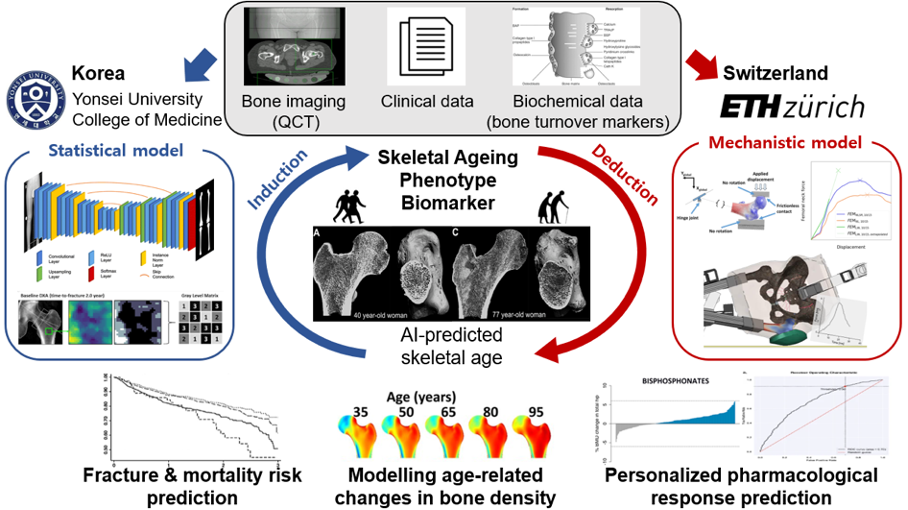Skeletal ageing phenotype digital biomarker for personalized bone care
The aim of the project: Development of skeletal ageing phenotype (SAP) digital health biomarker based on multimodal clinical data to enhance prediction of fracture risk and pharmacological response.
Background: A digital health biomarker to estimate skeletal ageing would enhance prediction of fracture risk, mortality risk, age-related BMD trajectories, and response to bone-enhancing drugs, thereby contributing to personalized bone health care in ageing societies.
Hypothesis: Artificial intelligence-predicted skeletal age using inductive-deductive hybrid modelling strategy would improve prediction of fracture risk, mortality risk and pharmacological response to bone-enhancing drugs at an individual level compared to current tools that utilize chronological age and conventional clinical predictors.
Purpose: 1) to develop skeletal ageing phenotype biomarker based on inductive (statistical machine learning)-deductive (mechanistic finite element analysis) hybrid modelling using imageing and other clinical data; 2) to validate the clinical utility of this biomarker to predict fracture risk and response to pharmacological intervention.
Work packages (WP): Features relevant to skeletal ageing will be extracted from QCT images and clinical variables to create an inductive (statistical) model (Yonsei University; WP1). Biofidelic finite element modelling will be used to build a deductive (mechanistic) model of skeletal ageing (ETH-Zurich; WP2). A hybrid hypermodel including features from inductive and deductive models will be developed to predict biological skeletal ageing (Yonsei and ETH; WP3), with validation against clinical outcomes.
